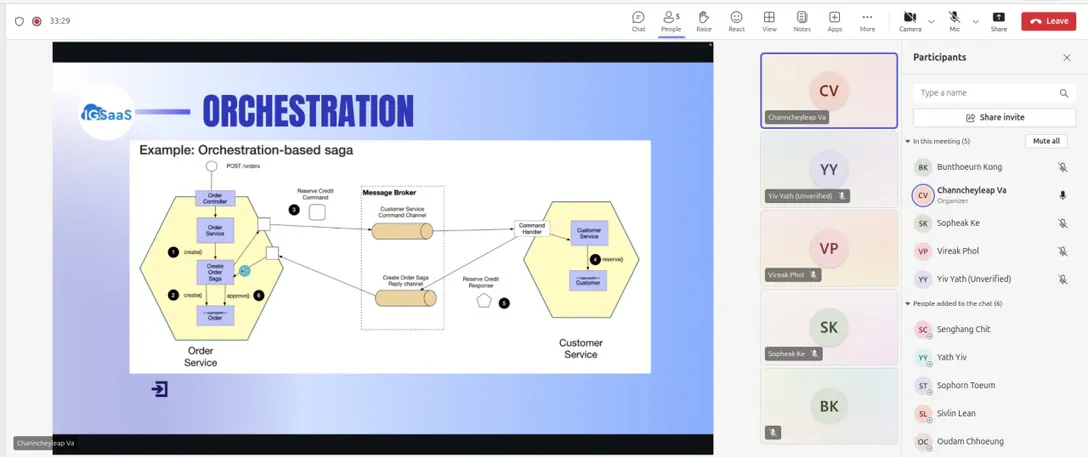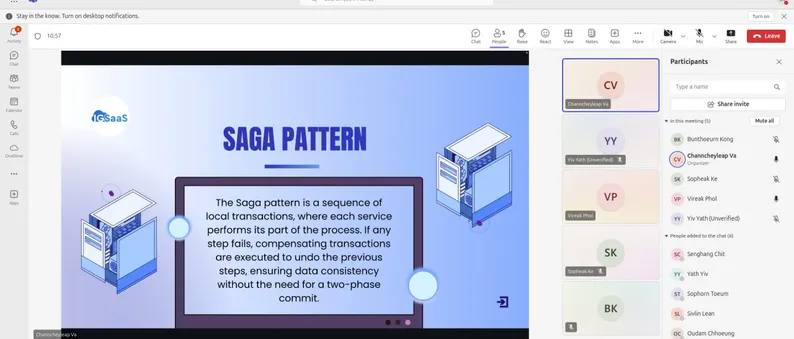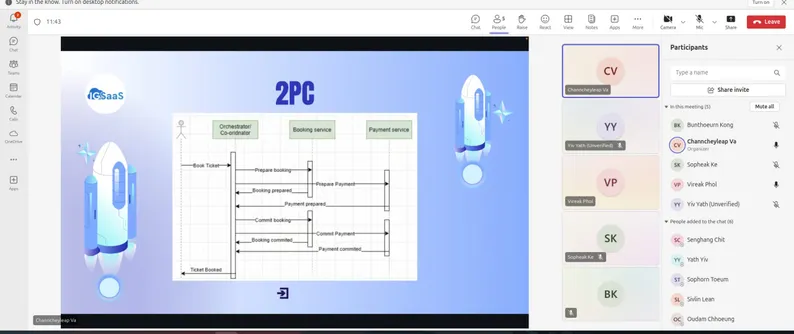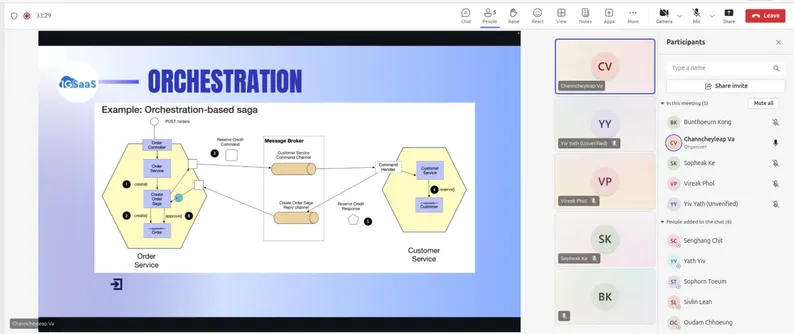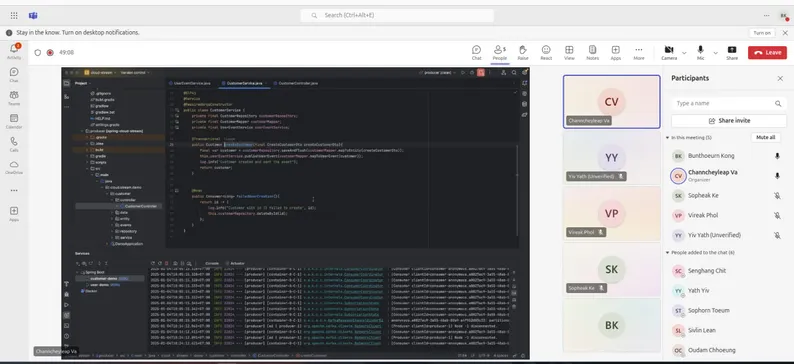- Sharing
- Technology
Microservice Transaction Management

Author
IG SaaS
Published
04 January, 2025
Location: IGSAAS
Date: 04 January, 2025
Sharing By: Va Channcheyleap - Lead Backend Enginner
Transaction Management for Microservices
Transaction management in microservices ensures data consistency across distributed services. Unlike monolithic systems, microservices handle transactions differently due to their decentralized nature.
Key Patterns for Transaction Management
1. Saga Pattern
- Description: Breaks a global transaction into smaller local transactions. Each step has a compensating transaction to undo changes in case of failure.
- Types:
- Choreography: Services coordinate by listening to and emitting events.
- Orchestration: A central orchestrator manages the saga steps.
2. Eventual Consistency
- Description: Allows temporary inconsistencies, ensuring consistency over time.
3. Two-Phase Commit (2PC)
- Description: Coordinates distributed transactions but is less common due to scalability and performance limitations.
Tools and Frameworks
- Event-Driven Platforms: Apache Kafka, RabbitMQ.
- Workflow Orchestration: Camunda, Zeebe.
- Database Solutions: Distributed databases like CockroachDB, Google Spanner.
- Outbox Pattern: Ensures atomicity between local transactions and events.
Best Practices
- Idempotent Operations: Ensure retries don’t create duplicates.
- Compensating Transactions: Rollback mechanisms for partial failures.
- Monitoring & Logging: Use tools like ELK Stack, Prometheus, and Jaeger for observability.
- Domain-Driven Design (DDD): Minimize cross-service dependencies with bounded contexts.
Example: Saga Pattern Workflow
- Order Service creates an order and publishes an
OrderCreatedevent. - Inventory Service reserves inventory and emits an
InventoryReservedevent. - Payment Service processes the payment and emits a
PaymentCompletedevent. - If a failure occurs, compensating transactions (e.g., releasing inventory) are triggered.
Transaction management in microservices emphasizes event-driven architectures, resiliency, and eventual consistency, enabling robust and scalable systems.
